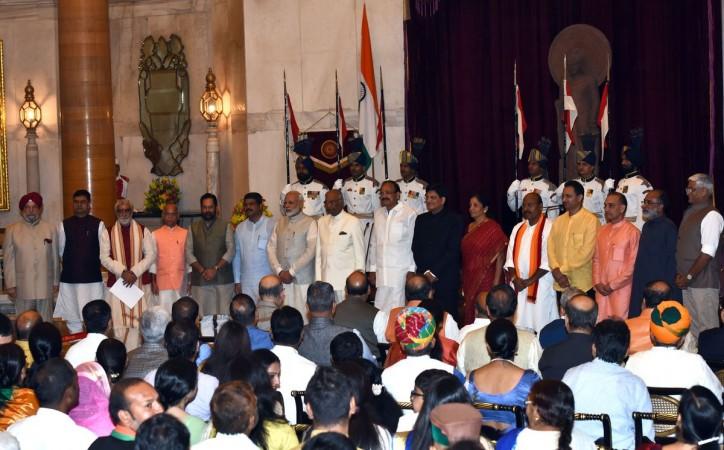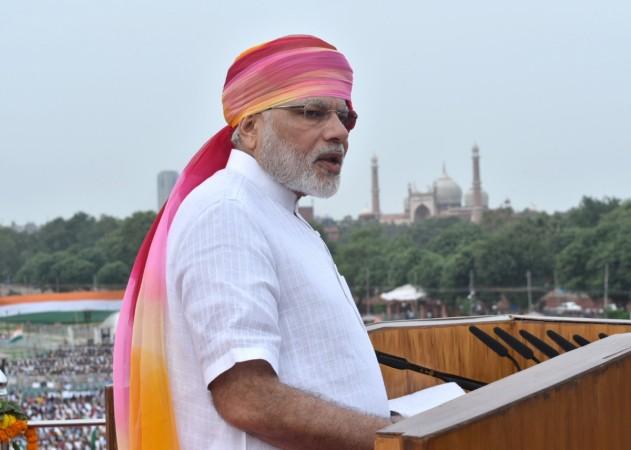
The third reshuffle by Prime Minister Narendra Modi has given birth to a great many angles of analysis. For some, it was a move aimed at the next Lok Sabha elections scheduled one-and-half years from now; for others, it was an assertion of the fact that Modi doesn't believe in his colleagues and found no other option but to import former bureaucrats to execute actions on the ground. There are still others who thought it was the RSS which prevailed finally through the choice of some of the new entrants during the reshuffle. There are even others who thought the reshuffle was done with the next year's Assembly elections in Rajasthan and Madhya Pradesh in mind.
These are certainly important questions as far as the third reshuffle of the Modi government is concerned. But among all these questions, one needs to ask one pertinent question: Is Modi's aura under far too much stress since the BJP has virtually been turned into a one-face party?
BJP has changed since Vajpayee-Advani days
In the post Vajpayee-Advani era, the saffron party's identity has undergone a change. It is no more a party of leaders led by a moderate face in Atal Behari Vajpayee who had worked with several allies to run a government for a full term. In his times, the BJP was a party of a number of veteran leaders who had carried out their responsibilities without showing dependence on the PM's charisma. The likes of Jaswant Singh, Yaswant Sinha, Arun Shourie, George Fernandes, Sushma Swaraj, Venkaiah Naidu and others had their own identities apart from the top two leaders – Vajpayee and Advani, the deputy prime minister. There were also chief ministers of repute in states like Gujarat, MP, Chhattisgarh, Goa, etc.
In the days of Modi, this is no more the case. It's true that leaders like Swaraj and Naidu have managed to maintain an identity of their own (the latter though now has exited the arena of party politics), but overall, it's the prime minister who has prevailed over everything other in governance.
This arrangement has made PM Modi the man with the ultimate accountability and taken a toll on his aura whenever there is an instance of failure by his colleagues. The essence of collective accountability, which is central to the functioning of a parliamentary system, has slowly been replaced by an individual accountability and it can pose a serious threat to undo the prime minister's popular appeal.
A parliamentary democratic set-up can't really deliver if there is no team work. The BJP had stepped up its plan ahead of the 2014 Lok Sabha elections by projecting a face and not a team, like it is seen in the presidential systems. And then, when that face brought it unprecedented success – first in the general elections and then in subsequent Assembly elections – the BJP felt the urgency to nurture effective teams of leaders to back the Modi phenomenon. But just like it had succeeded in bringing up Modi, it failed to discover a strong reserve bench. This is a paradox in the story of the BJP 2.0.

BJP's failure to deliver as a team will hit Modi's image
The Cabinet reshuffles – whether they deliver or don't in the immediate and long runs – will eventually reflect on Modi's leadership capacity and that is not a healthy example. Bringing in former bureaucrats shows the party is only concerned with overcoming the hiccup of leaders and ministers failing and not about building a reserve of future leaders. It will only demoralise the foot soldiers of the party who have given it all and limit its capacity to evolve as an effective team more.
Using reshuffle to win state elections is another potentially harmful strategy. In a zest to please the local electorate, the Modi government has picked time and again lesser known people for key responsibilities and this has not always clicked. Governance can't be confused with electoral populism but the NDA government at the Centre has been doing it repeatedly to pass the political tests.
A lot of key portfolios remained vacant at the Centre while many failed to cater to the people's needs at various points of time during Modi's tenure so far. Not being able to find people of calibre is a major challenge for any government but since the country has remained obsessed with Modi only, the danger has often been overlooked. But the question remains: How long can the BJP hope to ride on Modi's back to overcome its failure as a team? For if things don't improve, the letdown by his team would eventually undo all the aura that the BJP has built around Modi through tireless efforts.















